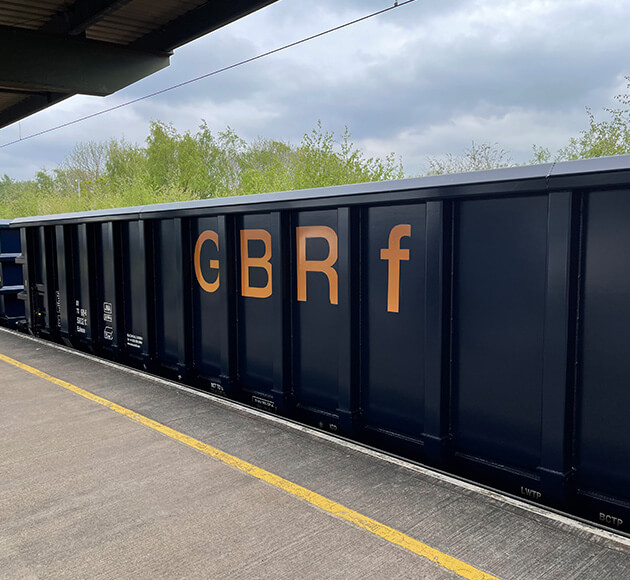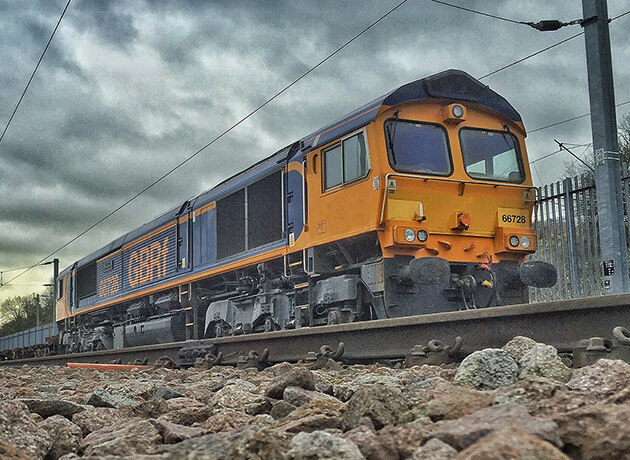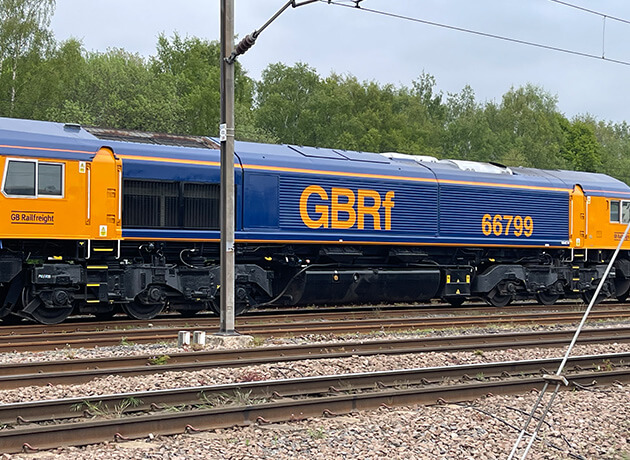
Optimising operations is the key to driving a major modal shift towards rail freight
Embracing a digital-led strategy to drive more effective operations in rail freight is an absolute necessity – and rail freight companies know they must continue to shape the way they work to implement digital processes to achieve greater efficiency.
Digital innovation in the rail freight sector is already reducing CO2 emissions, increasing connectivity, gaining operational efficiencies and improving customer service. By focusing on digitalisation, the sector is strengthening its position as one of the most efficient and environmentally friendly transport modes, which is creating more opportunities for a modal shift towards rail.
A major player in the UK rail freight industry since 1999 resulting in a sustained reliability level above 99% over the last 12 years

This commitment to digital transformation has contributed towards significant growth in GBRf’s roster of clients, and the company’s willingness to harness the very latest in digital intelligence has been a factor in creating and maintaining some very impressive longstanding relationships.
Recognising that ‘nothing wilts faster than laurels that have been rested upon’, GBRf continues to look for ways to work faster, smarter, safer and cleaner. Whilst to many this may seem like a cliché, the team at GBRf believes it can be achieved. The key question for this innovative team is always ‘how can we push harder?’.
A system that the rail freight sector relies upon from a logistics perspective is known as the Total Operations Processing System or TOPS. At the end of the 1960s, British Rail adopted TOPS – a computerised system developed to manage the movements and maintenance of locomotives and rolling stock. Known for its effectiveness, but recognised as an aging/legacy system with room for improvement, GBRf commissioned industry-leading digital transformation experts, DigiRail, to look at automating and improving the system, integrating it with other operational platforms and moving the newly combined applications into a cloud based system. The results have been very impressive and now GBRf is operating with greater efficiency using the DigiRail developed cloud-based advancement system (CBAS).
Delivering sophisticated intelligence-based solutions
Tom Clare led the project on behalf of DigiRail having already delivered hundreds of scalable and adaptable intelligence-based solutions for a range of businesses in the rail sector since the company was formed in 2019.
“We were on the same page as the team from GBRf right from the beginning,” said Tom. “The first thing we had to do was make sure they could access all relevant data in an accurate, timely manner, but in a way which could be effectively broken down and presented back to the user. It had to work seamlessly.
“GBRf knows its technology and knows it well. The team understood the conventional way of doing business was simply not enough if you were to continue to make the kind of mark the company wants to make in the freight sector and across the rail industry.

“The team wanted something that could scour their data and turn it into value-adding intelligent information by being easily accessible, understandable and manageable. It needed to be designed for real-time, up-to-the minute reporting so that operations team can constantly track the performance and requirements of their large fleet of locomotives. It had to be a right first time solution – a system that would strengthen GBRf by contributing towards operational efficiency and getting more trains on the lines to deliver more freight.” The new digital system is monitored by virtual Bots generating data in real time through points generated across the farthest reaches of the UK. Bots are electronic entities made of code that can carry out data-related tasks without human supervision – and can constantly search back and forth for details throughout the GBRf database. This means that data is constantly being reviewed and ready to be put in the hands of users. It is done so in a way that is more reliable, requires less button-pushing and allows GBRf to continually refresh data without any strain being put on the system.
“Now, if you want to know where a locomotive is, how it is doing, and where it could be deployed tomorrow, it’s much easier,” Tom said. “And it happens in a way that flows and reacts to other operational systems – improving wider business efficiency.
“But, crucially, the data is structured. This allows people to access immediate information on the status of their locomotive fleet better than ever before and is incredibly secure.”
What does Tom think this new way of doing things means for the rest of the rail industry?
“We have long moved past the information age,” he said. “Information needs sorting, and it needs understanding. We’re moving into an age of intelligence.”

Joining forces for the good of the industry
GBRf prides itself as being at the forefront of innovation in freight and logistics in UK rail and the acknowledgement that collaboration with others is a key factor in driving this innovation has been essential.
Working with DigiRail, the companies collaborated on delivering a new operational system that delivers a faster and more effective way of supervising and managing GBRf’s entire fleet. The new online system allows GBRf to determine deployment availability and maintenance schedules in real time and in one place – building an accurate snapshot to allow them to effectively manage and plan, wherever its fleet are in the country.
“The way we worked before today was what many would consider innovative,” said GBRf CEO John Smith. “Our systems are familiar to everyone that works in our industry – using a range of computer programmes, on-site machines and with the best minds in the business to operate them.
“It might be easy for some to rest on their laurels, knowing that this way of doing things is enough, but we knew there were better ways of working. We are helping more and more people every day deliver their goods from one end of the country to the other, and we need to continually meet this challenge if we are to contribute towards putting more freight on the railways and playing our part in reducing CO2 emissions.
“Optimising operations provides the key to driving the modal shift towards rail freight and prove that we can be efficient in our service, ultimately putting more trains on the tracks and taking freight off the road.
“Our customers work with us because they know that we will always adapt to optimise what we do. Our work with DigiRail will increase that connectivity with our team across the whole of the UK. As we help our customers grow bigger and better, we want them to be assured we are always willing to do the same and build on those longstanding partnerships.
DigiRail has done a fantastic job and the improvements in efficiency were almost immediate – paying back the entire cost of the project in one fell swoop. I was particularly impressed with DigiRail’s cost effective model and the team’s speed of delivery – they a very knowledgeable and clever transformational team. We are already looking at our next set of digital transformation projects with them.”
By creating an integrated system which brings all data from cloud-based systems and terminals across the country into one platform, GBRf and DigiRail have created a digital infrastructure to plan and react with split-second precision. They are also future-proofing the business.

Contact Tom Clare
Tom Clare led the project on behalf of DigiRail having already delivered hundreds of scalable and adaptable intelligence-based solutions for a range of businesses in the rail sector since the company was formed in 2019.
